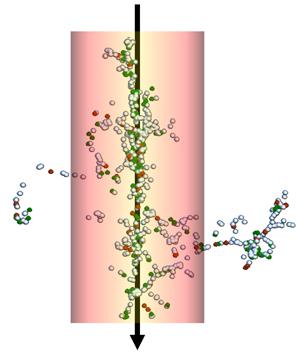
Ionization-induced self-healing provides a novel approach to: (1) improve the quality of epitaxial films for devices and surface barrier coatings for harsh environments; (2) non-thermally heal ion-implantation damage during chip manufacturing; and (3) develop radiation-tolerant materials for nuclear, high-energy accelerator and space applications. Ionization-induced damage production can be exploited over a wide range of energies to create: (1) novel defect states and structures far from equilibrium; (2) nanopores; (3) unique nanostructures; and (4) new functionalities in materials.
W. J. Weber, D. M. Duffy, L. Thomé, and Y. Zhang, “The role of electronic energy loss in ion beam modification of materials,” Curr. Opin. Solid State Mater. Sci. 19, 1 (2015). DOI: 10.1016/j.cossms.2014.09.003
For more information

